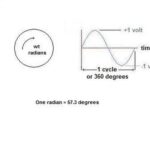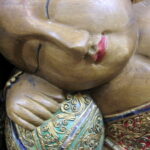The process of muscle contraction consists of four distinct phases; excitation, excitation-contraction coupling, contraction and relaxation. Each of these phases plays an important role in the contraction of muscles and ultimately, in movement of the body.
Excitation
Excitation is the first phase of muscle contraction and occurs when action potentials are transferred from the nerve fibers to the muscle fibers.
Nerve signals reach the bulbous end of the nerve fiber, known as the synaptic knob. This arrival of energy triggers the voltage-regulated calcium gates to open, allowing the passage of calcium ions into the synaptic knob. The calcium then triggers the release of acetylcholine (ACh) into the space between the synaptic knob and the muscle fiber, known as the synaptic cleft. The ACh then binds to protein receptors found on the sarcolemma of the muscle fiber. When two molecules of ACh have bound to each receptor, the gate opens, allowing sodium to enter the cell and potassium to exit the cell. The movement of these ions leads to a change in the voltage of the cell, reversing it’s polarity. This sudden change in volatage is known as end-plate potential. Voltage-regulated ion channels found in the sarcolemma may open or close in response to the end-plate potential. The muscle fiber is now considered to be excited.
Excitation-Contraction Coupling
Excitation-contraction coupling is the second phase of muscle contraction and occurs when action potentials stimulate the myofilaments within the cell in preparation to contract.
Action potential travels throughout the cell, beginning at the end plate. This wave of excitement spreads throughout the sarcoplasm. The action potential then triggers the opening of voltage-regulate gates on the T tubules within the cell. The calcium channels within the terminal citernae of the sarcoplasmic reticulum open as well, due to the physical connection between the sarcoplasmic reticulum and the T tubules, allowing calcium to diffuse throughout. Calcium then binds to the troponin, found on the thin filaments. This binding of calcium to troponin causes the troponin-tropomyosin to change shape and fall deeper within the thin filament, exposing active sites n the actin filament, making it possible for these sites to bind with myosin heads.
Contraction
Contraction is the third phase in muscle contraction and occurs when when the muscle fibers become tense and contract, shortening in length. It has not always been certain how the muscle fibers were capable of contracting, but this contraction is now believed to follow the model of the sliding filament theory, developed by Jean Hanson and Hugh Huxley.
In order for the muscle to contract, the myosin head must have a molecule of ATP bound to it. A specialized enzyme, myosin ATPase metabolizes this ATP and releases energy which causes the myson head to extend itself, along with an ADP molecule and phosphate group bound to it. The extended high-energy myosin head then binds to one of the active sites on the thin filament. The site where the myosin head binds with the active site of the thin filament is known as a cross-bridge between the myosin and actin. When the cross-bridge is formed, the ADP molecule and the phosphate group which were bound to the myosin head previously are released and the myosin head is no longer extended, but is now bent in a low-energy position. The myosin head flexes in this low position, tugging the thin filament along with it. The myosin head remains bound to the actin until it binds with a new ATP molecule, at which point the myson will release the actin and the process starts over again.
Relaxation
Relaxation is the final phase of muscle contraction and occurs when a muscle fiber relaxes and returns to its original length and position.
Nerve signals have ceased and the synaptic knob stops releasing ACh. The already-present ACh begins breaking down and the synaptic knob reabsorbs the ACh and stimulation ceases. Calcium is moved away from the cytosol and back into the cisternae. In some cells, the calcium will then bind with a protein called calsequestrin to be stored until the muscle is stimulated again. The tropomysoin then returns to its original position, covering the active sites on the actin filament, blocking the myosin heads from binding with these sites.
References
Saladin, Kenneth S.. Anatomy & physiology: the unity of form and function. 5th ed. Dubuque: McGraw-Hill, 2010. Print.
Anatomy & Physiology: Muscle Contraction
Muscle Contraction




